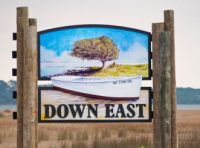BEAUFORT — Carteret County commissioners last week voted unanimously to remove an extra layer of water quality protection that has been in place for a decade in the part of the county known as Down East.
Supporter Spotlight
The action came during the board’s regular meeting Sept. 21 at the county administration building.
The change deletes a 20-foot buffer requirement for buildings in areas of environmental concern as designated by the state Coastal Resources Commission under the Coastal Area Management Act. The now-deleted 20-foot buffer was in addition to the 30-foot CAMA buffer still in place and was adopted in 2006 in response to concerns over development pressure in Down East communities.
Mark Hooper of Smyrna was the only member of the public to speak during the hearing on the proposal. Hooper said there was a “good reason” for requiring the extra buffer, including designated outstanding resource waters Down East.
“As we are unincorporated down that way, where do our protections come from? You have ordinances, you have CAMA rules and regs. If you want to go beyond those things, this is what this is for. You do these special types of ordinances and that gives you some extra protection.”
Hooper was part of a group known as Down East Tomorrow that was formed at the time in response to rapid development in the northeastern part of the county prior to the financial crisis of 2007-08 that slowed real estate markets.
Supporter Spotlight
The county planning commission had voted unanimously Aug. 10 to recommend the change. County Planning Director Eugene Foxworth said during the meeting that exceptions to the rule were the most frequently requested variance received and granted, with a handful a year, he said.
Buffers improve water quality by filtering pollutants such as nutrients and bacteria from stormwater runoff.
Areas of environmental concern are designated to protect them from uncontrolled development that can damage property, public health and the environment. These areas cover all coastal waters and about 3% of the land in North Carolina’s 20 coastal counties, according to the Division of Coastal Management.
Commissioner Robin Comer said he’d served on the planning commission when the overlay buffer was created. Stormwater rules have changed since then, he noted, adding that all variance requests from the buffer rule had been granted.
“It sounds like a wasted bit of lineage in an ordinance,” Comer said.








